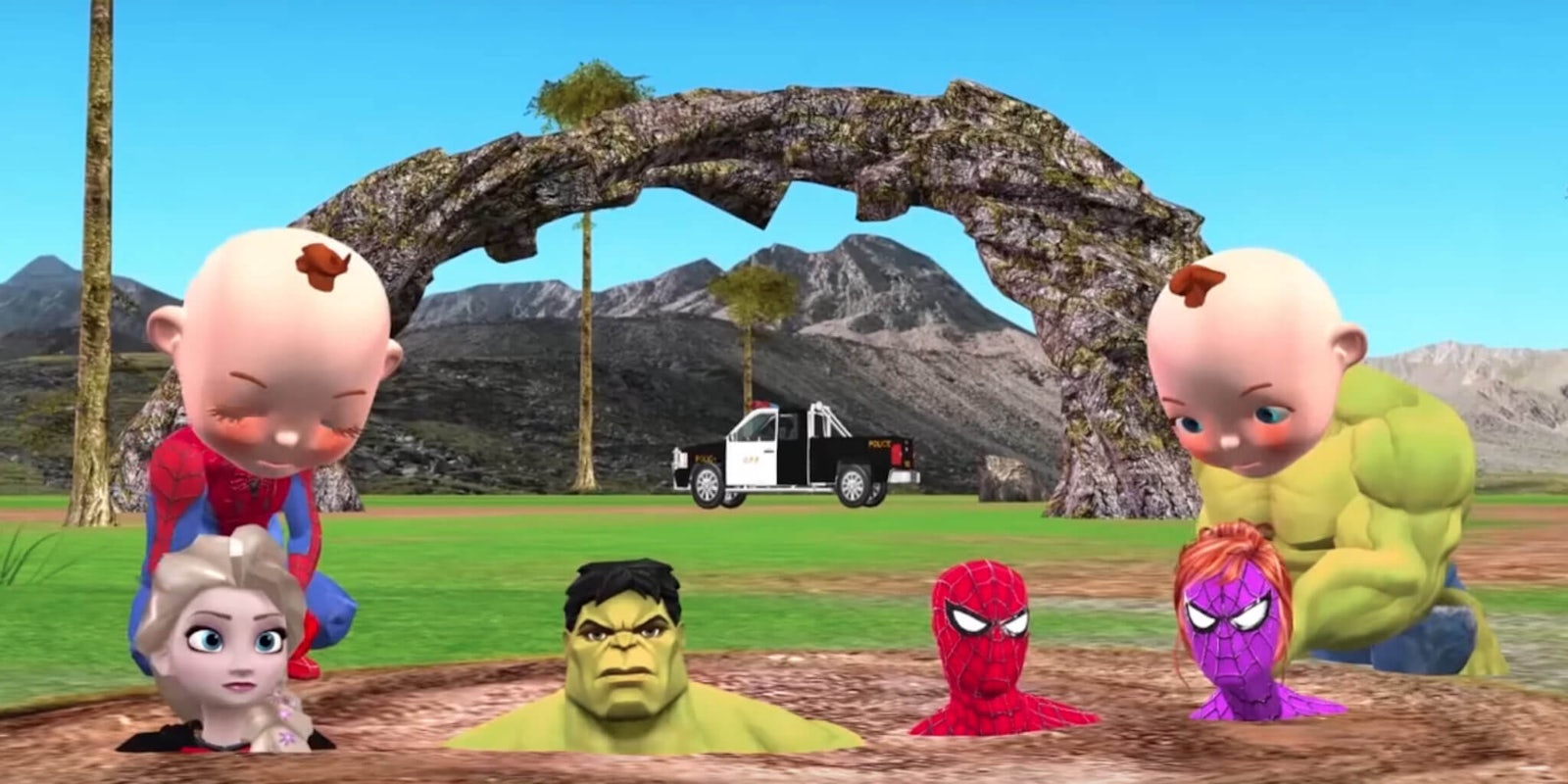Opinion
YouTube kids’ videos are supposed to be an escape. Not just for the children who glue their unblinking eyes to the screen, but for the parents as well. When a parent needs to get chores done—when dinner needs to be cooked and the table needs to be wiped and the dog needs to be walked—YouTube is always there. It serves as a distraction and a babysitter and an educator and, sometimes, as the seemingly friendly face you wish your kids had never met. But YouTube oftentimes isn’t a friendly place for kids.

The end of the decade allows us to reflect on how useful YouTube has been and how much fun it’s possible to have on the site. And there are good reasons why kids can participate. The platform has tried its best to keep the YouTube Kids app as pure as possible. It’s tried to fix the algorithm issues that once led children on the path to conspiracy videos or to content that encourages self-harm. It’s tried to keep potential pedophiliacs from leaving predatory comments on children’s content.
But it’s a battle that’s hard to win, especially when vloggers take something innocent and make it … well … weird.
Take “Johny Johny Yes Papa,” the nursery rhyme that gets stuck in your head without warning. In the original version, Johny is accused by his Papa of eating sugar, an allegation that Johny vehemently denies. It’s supposed to be a cute back-and-forth between a father and son and about how eating straight sugar isn’t great for your body.
The first video was uploaded to YouTube in 2009, according to Know Your Meme. Every few years after that, a new version of the song would appear and somebody’s channel would go viral because of it. Millions would watch. But in 2018, there was a resurgence of the tune, and the “Johny Johny Yes Papa” meme began to circulate across the internet. Instead of sugar, Johny was eating toothpaste. Or he was a walking, talking refrigerator. Or he was bathing. Or he (or his father) was doing something else disturbing.
It was all unsettling—and some of it was inappropriate.
everyone is freaking out about the new Johny Johny Yes Papa video but only the real ones remember the original wtf Johny Johny Yes Papa video pic.twitter.com/VjycDRYRkh
— Autumn 🍁 (@kumoka_old) August 25, 2018
As Vox wrote, “The video’s fragmented, slightly absurdist lyrics and sugar-based parent-child conflict have inspired a bizarre mythos that expands Johny’s family dynamics into a portrait of nuclear family dysfunction, complete with weird psychosexual elements and hints of dark secrets.”
Doesn’t sounds very childlike, huh?
Unfortunately for kids and the parents who just need a goddamn break for one second please, this happens all the time. Call it the curse of kids’ content. It really started showing up more and more in the latter half of this decade.
Just ask Peppa Pig. Bootleg videos of her having her teeth pulled by a sadistic dentist have found their way to children, and the frightening Momo character was reportedly edited into other Peppa Pig content and ordered the viewers to perform dangerous stunts.
Or talk to Elsa about it. In 2017, it was discovered that there were plenty of videos of famous Disney characters acting very unDisney-like. In those videos, Frozen’s Elsa had her arm broken by Spider-Man, the cast of Doc McStuffins turned into zombies after a pumpkin was punctured by a hypodermic needle, and the members of PAW Patrol drove a car into a light pole and then burst into flames.
According to research, our children are currently growing up during the safest time in the world’s history. Child abductions almost never happen, and the child mortality rate is infinitesimal. But watching YouTube videos can be a disturbing and dangerous pitfall that those of us who grew up before the age of social media.
Since I’m the parent of a couple of 9-year-olds, I often think about how much YouTube they should be watching. They barely watch any at all (as far as I know, I think). But I’ve had conversations with other parents who hit the YouTube play button and leave their kids to their own devices. Sure, most of the videos are probably harmless, but it only takes one to fall helplessly down a rabbit hole.
That should give all of us pause when opening the YouTube app on our phones for our kids. You just never know what cursed kids content they might encounter. You never know what dangerous disturbances lie within. That’s what the past decade has taught me, anyway.
READ MORE:


